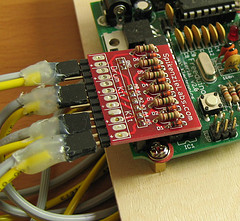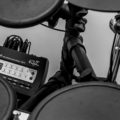In my opinion, the snare drum is the most essential instrument in the realm of rock music. Whenever you listen to a well-crafted rock track, you are bound to hear a powerful and impactful snare drum.
Looking back, there were several bands that stood out to me with their forceful and extraordinary snare drum sounds. Genesis comes to mind, and who can forget the iconic gated reverb effect perfected by Phil Collins? Van Halen also had a distinctive snare drum sound, and one of my personal favorites is Led Zeppelin.
How are these snare drum sounds created? They are shaped by factors such as the type of snare drum used, the choice of microphones for the top and bottom of the snare drum, the pre-amps used for those microphones, and the positioning of those microphones. Recording techniques and mixing Music Production - Improve Your Sound - The rise in popularity of work-from-home studios has significantly impacted the music production landscape in recent years, driven by the increasing availability of tools and technology. This growth has led to the emergence of mobile recording rigs, making it possible to record full band performances anywhere. While one might anticipate a wealth of high-quality music,… techniques further contribute to achieving the best snare drum sound.
Let’s start with EQ.
The EQ for a snare drum varies for each track, so the following settings I’m providing are just general guidelines. You should use your ears to fine-tune the EQ settings, as there are no fixed settings for EQ, compression, or other sound effects.
Try using a high-pass filter set at 120Hz and below. 120Hz is a good starting point, and then adjust the filter downward to achieve the desired cut. Boost between 150-300Hz to add thickness to the snare drum. Cut around 400-900Hz to reduce any boxiness or low-end muddiness. Boost between 5-7kHz for added crispness. A boost between 9-15kHz can bring brightness to the snare, but be cautious not to interfere with the vocals in that frequency range.
For a thick snare sound: Boost +3dB around 100Hz (Q=1.0), Cut -5dB around 2000Hz (Q=1.4), Boost +3dB around 8000Hz (Q=1.0). For a clean and controlled snare drum sound: Cut -3dB around 200Hz (Q=1.0), Boost +3dB around 8000Hz (Q=1.0).
If you’re experimenting with these settings, it’s recommended to use a parametric EQ, as it allows you to adjust the Q (bandwidth) as well.
Here are some commonly used compression settings: Attack: 20ms to 60ms Release: 30ms to 100ms Threshold: This depends on the strength of the signal, usually set at -6dB or -16dB, based on your desired dB level. Compression ratio: 2:1 to 6:1
Regarding panning settings for the snare drum, many people tend to pan it dead center. However, the snare drum is not actually centered. It is slightly off to the left or right, depending on whether the drummer is left-handed or right-handed. For a right-handed drummer, pan the snare drum slightly to the right, and for a left-handed drummer, pan it slightly to the left. By “slightly,” I mean around 5 to 7 units, which would read as +5 or -5, depending on the drummer’s handedness.
Manuel Marino is a seasoned Senior Producer, Music Composer, and Artist with over a decade of experience. He specializes in branded entertainment across various mediums, including video games, films, and advertising campaigns. With 20+ years as a game music composer, Manuel has worked on numerous platforms, creating diverse orchestral soundtracks. HIRE ME


 Manuel is a passionate, driven, and techsavvy AV technician,
Manuel is a passionate, driven, and techsavvy AV technician, 



